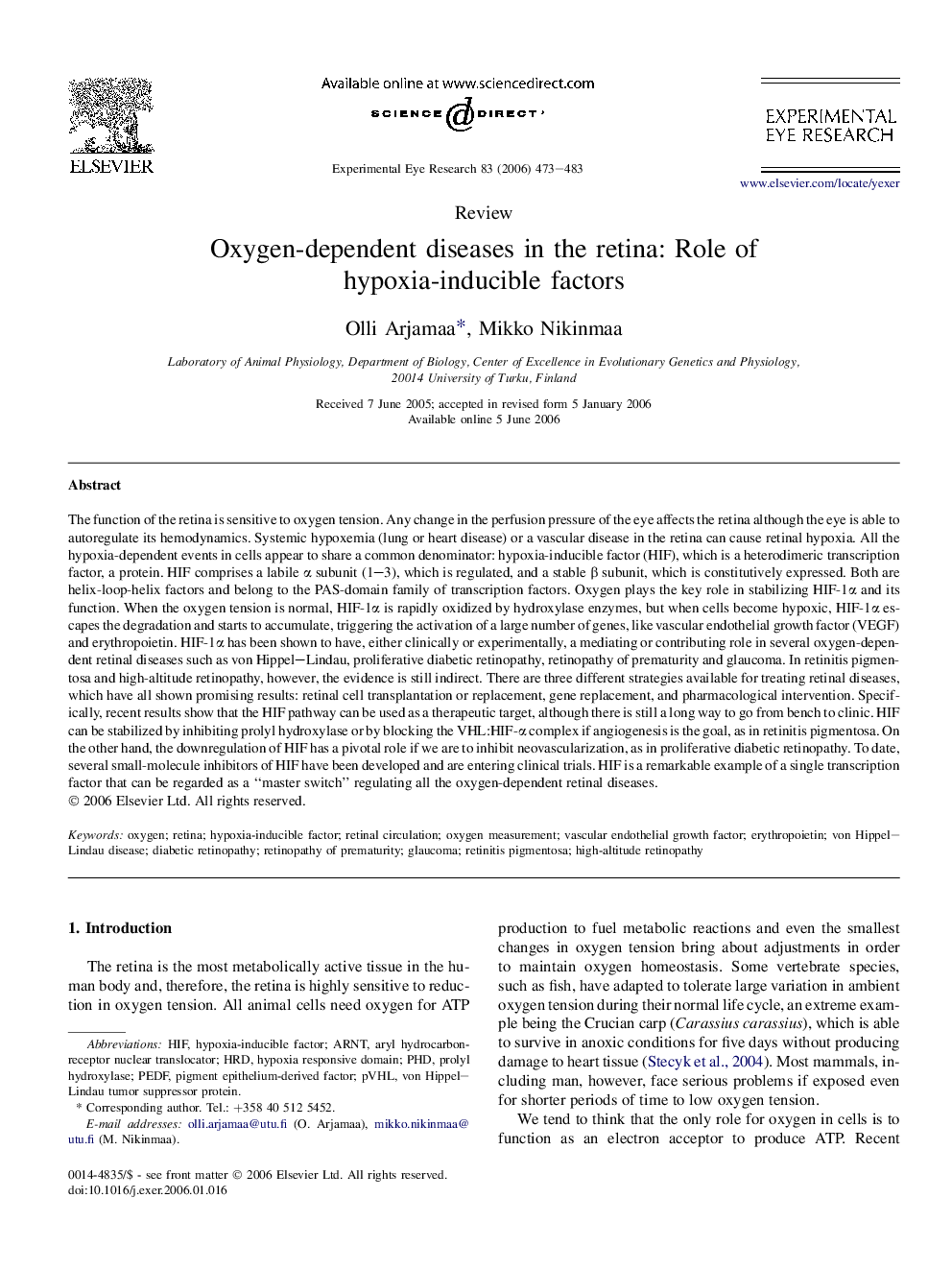| کد مقاله | کد نشریه | سال انتشار | مقاله انگلیسی | نسخه تمام متن |
|---|---|---|---|---|
| 4012507 | 1261198 | 2006 | 11 صفحه PDF | دانلود رایگان |

The function of the retina is sensitive to oxygen tension. Any change in the perfusion pressure of the eye affects the retina although the eye is able to autoregulate its hemodynamics. Systemic hypoxemia (lung or heart disease) or a vascular disease in the retina can cause retinal hypoxia. All the hypoxia-dependent events in cells appear to share a common denominator: hypoxia-inducible factor (HIF), which is a heterodimeric transcription factor, a protein. HIF comprises a labile α subunit (1–3), which is regulated, and a stable β subunit, which is constitutively expressed. Both are helix-loop-helix factors and belong to the PAS-domain family of transcription factors. Oxygen plays the key role in stabilizing HIF-1α and its function. When the oxygen tension is normal, HIF-1α is rapidly oxidized by hydroxylase enzymes, but when cells become hypoxic, HIF-1α escapes the degradation and starts to accumulate, triggering the activation of a large number of genes, like vascular endothelial growth factor (VEGF) and erythropoietin. HIF-1α has been shown to have, either clinically or experimentally, a mediating or contributing role in several oxygen-dependent retinal diseases such as von Hippel–Lindau, proliferative diabetic retinopathy, retinopathy of prematurity and glaucoma. In retinitis pigmentosa and high-altitude retinopathy, however, the evidence is still indirect. There are three different strategies available for treating retinal diseases, which have all shown promising results: retinal cell transplantation or replacement, gene replacement, and pharmacological intervention. Specifically, recent results show that the HIF pathway can be used as a therapeutic target, although there is still a long way to go from bench to clinic. HIF can be stabilized by inhibiting prolyl hydroxylase or by blocking the VHL:HIF-α complex if angiogenesis is the goal, as in retinitis pigmentosa. On the other hand, the downregulation of HIF has a pivotal role if we are to inhibit neovascularization, as in proliferative diabetic retinopathy. To date, several small-molecule inhibitors of HIF have been developed and are entering clinical trials. HIF is a remarkable example of a single transcription factor that can be regarded as a “master switch” regulating all the oxygen-dependent retinal diseases.
Journal: Experimental Eye Research - Volume 83, Issue 3, September 2006, Pages 473–483